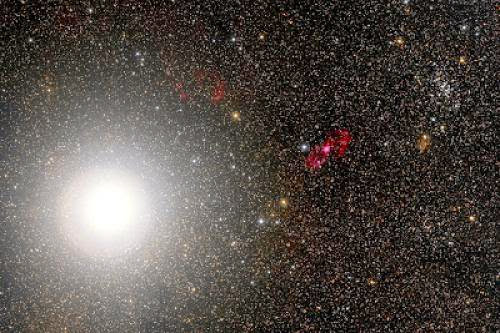"The glare of Alpha Centauri, one of the brightest stars in planet Earth's night sky, floods the left side of this southern skyscape. A mere 4.3 light-years distant, Alpha Centauri actually consists of two component stars similar in size to the Sun, locked in a mutual orbit. Much smaller and cooler, a third member of the same star system, Proxima Centauri, lies outside this field of view. " Click image for larger size."Still, the telescopic scene does reveal often overlooked denizens of the Milky Way's crowded galactic plane that lie beyond the glare of Alpha Centauri, including a planetary nebula cataloged as Hen 2-111, an estimated 7,800 light-years away. The gaseous shroud of a dying star, the nebula's brighter core and fainter halo of reddish ionized gas span over twenty light-years, seen just right of picture center. Farther right are two notable open clusters of stars, the compact Pismis 19 also nearly 8,000 light-years away whose light is reddened by intervening dust, and the looser, closer NGC 5617. Just visible in the glare of Alpha Centauri is the dim glow of a shell-like supernova remnant, above and right of the closest star system's bright core."- http://apod.nasa.gov/apod/ap120628.html



0 comments:
Post a Comment